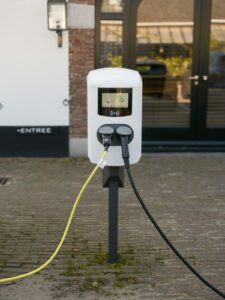
Home / EV Charging News / Public Perceptions of Electric Cars
Electric cars have been growing in popularity in recent years, with more people recognizing the benefits of electric vehicles (EVs) over traditional gasoline-powered cars. Despite this, there are still negative perceptions and misconceptions surrounding EVs that may hinder their adoption. Addressing these concerns through education and outreach could help increase EV adoption rates.
One of the most common negative perceptions of EVs is their perceived lack of range. Many people believe that EVs cannot travel as far as traditional cars before needing to be recharged, making them unsuitable for long trips. While this may have been true in the early days of EVs, modern EVs can travel hundreds of miles on a single charge. For example, the Tesla Model S has a range of up to 402 miles, while the Chevrolet Bolt EV has a range of up to 259 miles.
Another common concern is the cost of electric cars. While EVs can be more expensive upfront than traditional cars, they can save money over the long term by reducing fuel costs and maintenance expenses. In addition, government incentives and tax credits can help offset the initial cost of an EV.
Another misconception about EVs is that charging them is a hassle. Some people believe that charging stations are few and far between, making it difficult to find a place to charge when needed. In reality, there are now thousands of public charging stations across the country, with many more being installed every day. In addition, many EV owners simply charge their cars at home, just as they would charge their phone or laptop.
Another concern is the time it takes to charge an electric car. While it is true that charging an EV takes longer than filling up a gas tank, most people do not need to charge their car to 100% every time they plug it in. In fact, many EV drivers top off their battery while they are at work, running errands, or even while they sleep.
To increase adoption rates of EVs, it is important to address these negative perceptions and misconceptions through education and outreach. This can include:
Additionally, it is important to address the concerns of people who are hesitant to adopt EVs due to their perceived lack of driving experience. This includes addressing concerns about acceleration, handling, and overall performance. In reality, many EVs are capable of impressive acceleration and handling, and can provide a smooth and enjoyable driving experience.
Another potential obstacle to EV adoption is the perception that they are not as safe as traditional cars. However, studies have shown that EVs are generally as safe or safer than gasoline-powered cars. This is due in part to the fact that EVs have a lower center of gravity, reducing the risk of rollovers, and the fact that they have fewer moving parts, reducing the risk of mechanical failure.
Finally, it is important to address the concerns of people who are hesitant to adopt EVs due to their perceived impact on the electrical grid. Some people worry that if too many people switch to EVs, it could overload the grid and cause power outages. However, studies have shown that even if EV adoption rates were to increase significantly, the grid would be able to handle the increased demand. In fact, EVs can actually help to stabilize the grid by providing energy storage and balancing services.
In conclusion, while there are still negative perceptions and misconceptions surrounding electric cars, education and outreach can help to address these concerns and increase adoption rates. By providing accurate information about the benefits of EVs, addressing concerns about range anxiety, charging infrastructure, and driving experience, and highlighting the safety and stability of EVs, more people may be willing to make the switch to electric. With continued advancements in battery technology and infrastructure, the future of electric cars is bright, and they have the potential to revolutionize the way we travel and reduce our impact on the environment.
$2,890.00 Original price was: $2,890.00.$2,790.00Current price is: $2,790.00.
$3,950.00 Original price was: $3,950.00.$3,450.00Current price is: $3,450.00.
$1,650.00 Original price was: $1,650.00.$1,590.00Current price is: $1,590.00.
$2,290.00 Original price was: $2,290.00.$2,150.00Current price is: $2,150.00.
$1,290.00 Original price was: $1,290.00.$799.00Current price is: $799.00.

Your Power Management Partner for Over 25 Years Future Generations Depend on Our Decisions Today ™
2024 © All rights reserved by CyberSwitching